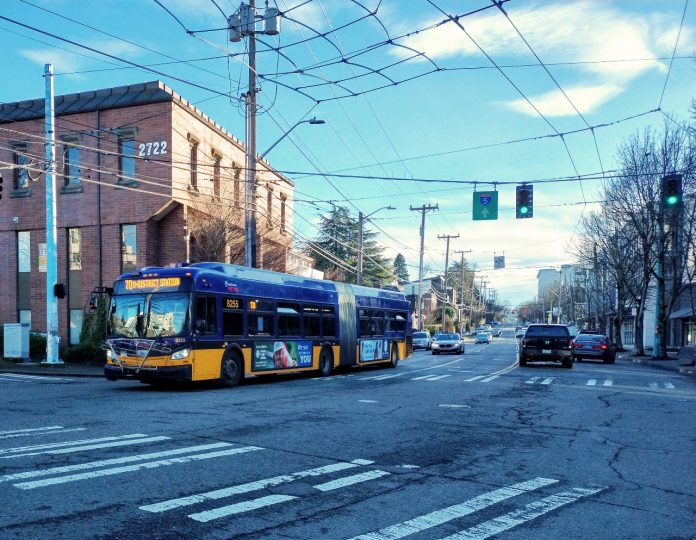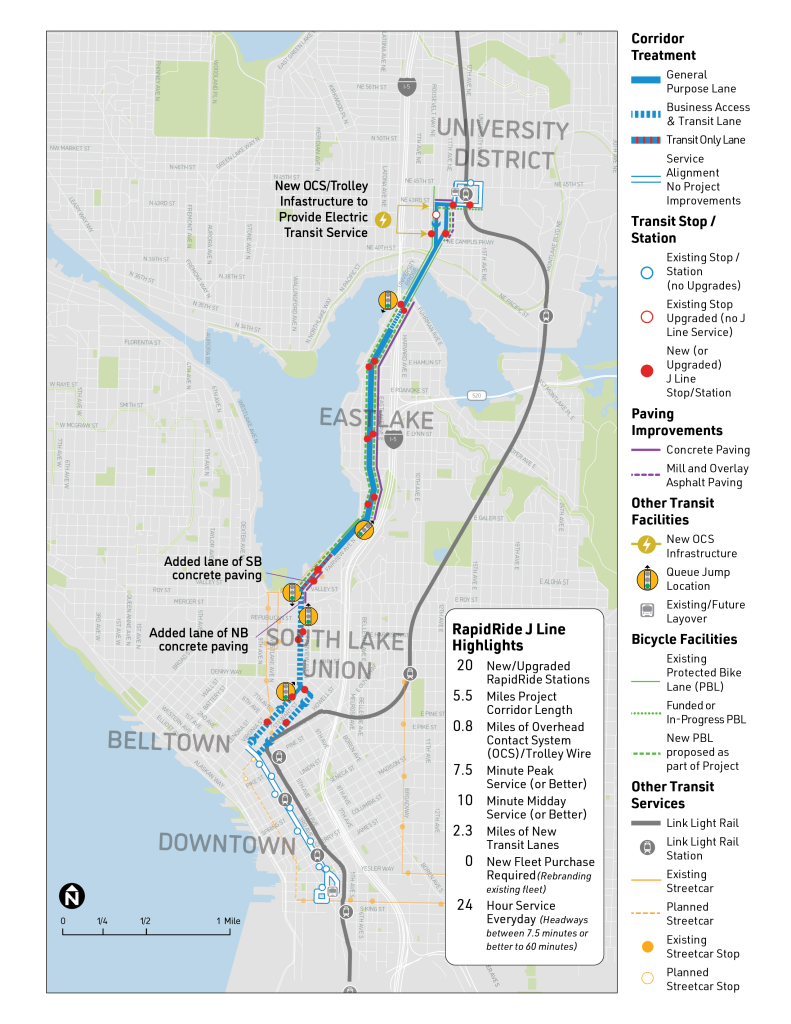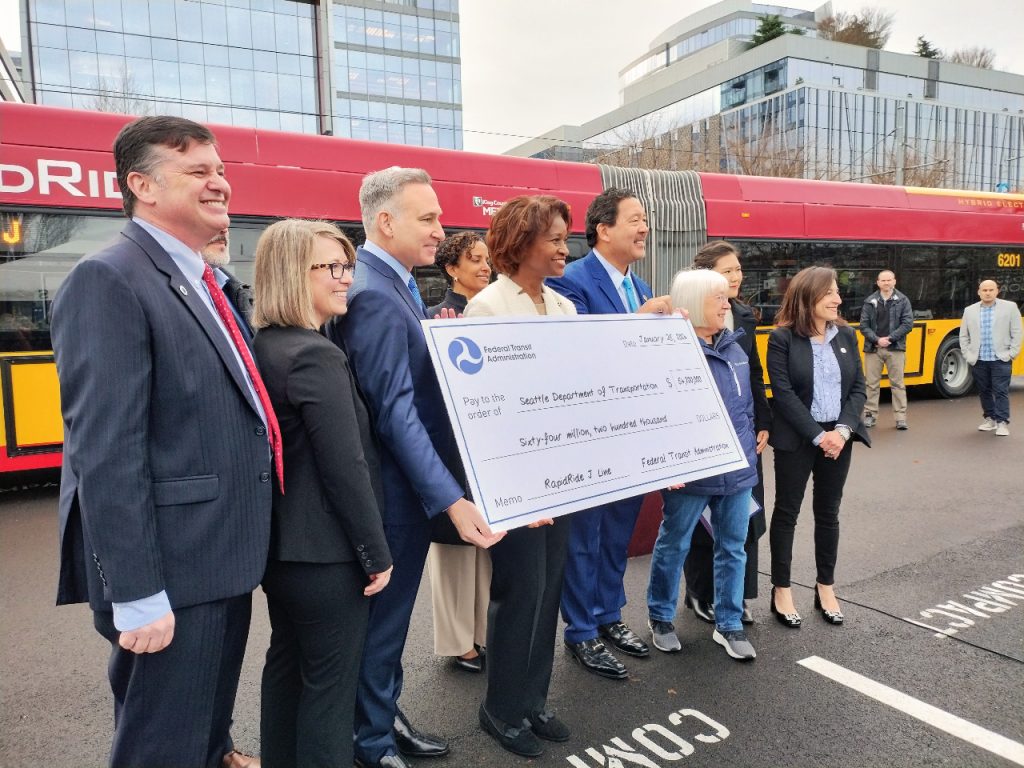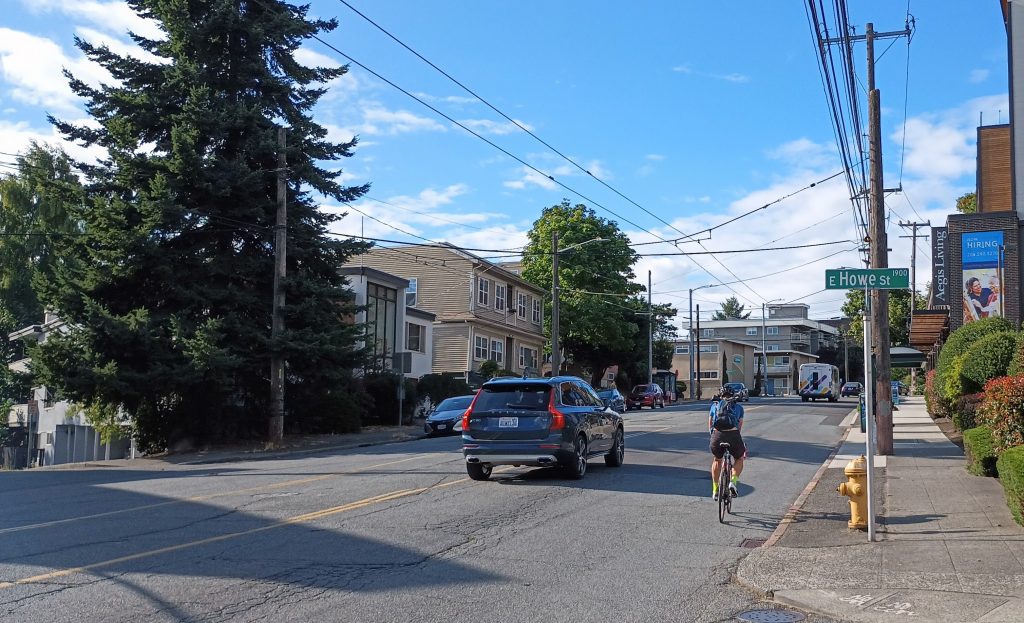
Seattle’s Route 70 is well on its way to being replaced by the RapidRide J Line between Downtown and the University District. In recent weeks, the project has hit some significant milestones, and the official start of construction is steadily approaching, work which will bring fairly transformative change to the Eastlake neighborhood and its connecting corridors.
The timeline to build the $128 million project is set to be around three years, with RapidRide service planned to start in 2027. Most of the Eastlake Avenue E and Fairview Ave N corridors where the 70 currently operates will be fully rebuilt and repaved, and the transportation upgrades will be coming along with a new water main, installed in coordination with Seattle Public Utilities. The work to add protected bike lanes along the entire corridor, with dedicated bus lanes in targeted areas, and pedestrian improvements throughout, will resemble work currently wrapping up along the E Madison Street corridor that began in 2021 as part of the RapidRide G.

This past Friday, the Seattle Department of Transportation (SDOT) officially put the project out for advertisement, allowing potential contractors to review plans. Procurement documents outline the expectation from the City that work will be completed within 594 working days — more than two full years at five days per week, not counting holidays. The official start date of construction is expected to be sometime this summer.
Days before that release, leadership from the City of Seattle and King County joined SDOT to officially celebrate receipt of a $64.2 million Small Starts grant from the Federal Transit Administration (FTA). The amount of the grant, which has been in development since fall of 2017, has increased from an original $45 million even as the project’s scope was reduced in 2020, with the northern terminus for the line changed from Roosevelt Station to U District Station, in response to escalating project costs.

The event illustrated the degree to which City leadership appears fully behind the project at this point, against a backdrop of continued opposition from some business owners and residents in Eastlake, in its most distilled form coming from the Eastlake Community Council. Concerns about lost parking have persisted since at least 2016, and remained at the top of the debate even after SDOT conducted an exhaustive study of potential alternatives to adding protected bike lanes along Eastlake Avenue E.
In attendance at the event celebrating the large check was Councilmember Maritza Rivera of District 4, who represents the northern chunk of the line: the University District. Rivera’s predecessor, Alex Pedersen, was a loud critic of the RapidRide J project, and sided with the Eastlake Community Council in its fight against the project, advocating that the funding for the J Line be reallocated to other areas of the city, a request that ignores the federal grant as a substantial portion of its funding plan.
“Most of the benefit of this project to District 4 is the improved connection between the U-District Station and SLU and Downtown. Most of the construction will be south of the Ship Canal,” Rivera wrote early this month, recounting the event in her constituent newsletter. “It was a pleasure to stand with Senator Patty Murray, Mayor Bruce Harrell, King County Commissioner Dow Constantine, and Federal Transit Administrator Nuria Fernandez in support of this new project.”

But unlike Pedersen, Rivera doesn’t represent Eastlake, which became part of Central Seattle’s District 3 as part of the city’s last redistricting process. District 3 Councilmember Joy Hollingsworth was not in attendance, nor was Council President Sara Nelson, who attended a meeting of the Eastlake Community Council last summer where she was bombarded with opponents — and supporters — of the RapidRide J project voicing their opinions, when she had been expecting a broader conversation about city issues.
Now, the Eastlake Community Council is under new leadership, with former President Detra Segar departing the organization just a few months after the board voted to eject four members for supporting the RapidRide J project by way of sending a dissenting letter to City leadership that laid out how divided the board was on the issue of the transit project. The new board President, Shane Hope, has taken a more conciliatory tone on the project.
“The Eastlake Community Council Board, like many people in our area, has supported better transit and bike lanes but has also expressed concerns about aspects of the J line design and its impacts on the neighborhood,” Hope wrote in an email in late January. “Regardless, the project has certain benefits for the city as a whole and appears to be in the final construction planning stage. […] Meanwhile, the ECC appreciates the effort that has gone into planning this project and continues to advocate for great transit, bike and pedestrian mobility, AND a great Eastlake neighborhood.”
RapidRide J line construction will ultimately be incredibly disruptive to Eastlake, disruption that will inevitably be used to paint the transit project in a negative light, despite the needed maintenance, utility upgrades, and new elements, like curb ramps, that no reasonable person would object to bringing to Eastlake.

Capitol Hill Seattle has detailed the disruptions that have come from the RapidRide G project, with business owners who are part of the Madison Valley Merchants Association authoring a letter to SDOT last fall regarding “the city’s lack of communication and planning regarding the Madison BRT project.” As construction finally wraps up, it’s clear that there were elements of construction management that need improvement when it comes to future projects.
“We’re incorporating lessons from the RapidRide G project into our outreach and construction plans,” SDOT spokesperson Mariam Ali told The Urbanist. “Effective practices include outreach to business owners, creating pedestrian pathways with jersey barriers, and minimizing sidewalk closures. Signage security and daily site assessments will be a priority.”
In Eastlake, the obstacle that I-5 presents means parallel routes along arterial streets will be even more scarce than they are on Madison, making detours more difficult.
“Our team is actively working on the details for implementing construction of the project to address potential disruptions and road closures,” Ali said. “While final details depend on selecting a contractor, we’re planning to minimize detours and long-term closures. We will have one anticipated detour in the area between Harvard Ave E and E Allison St. There could be small detours during intersection work. We’ll also maintain transit services during construction.”
SDOT seems to have improved its communication plan for RapidRide J. “We’ll set up a bi-weekly online open house for business owners and stakeholders, share monthly project updates, and send targeted emails,” Ali said. “We’re creating detailed maps for work locations, and we’ll use signage for important announcements.”
With a lot of hard work still ahead before the full benefits of the RapidRide J are able to be fully realized, getting through the next few years will be a high-wire act requiring a lot of dedication and coordination. The payoff at the end is set to be significant.
Ryan Packer has been writing for The Urbanist since 2015, and currently reports full-time as Contributing Editor. Their beats are transportation, land use, public space, traffic safety, and obscure community meetings. Packer has also reported for other regional outlets including BikePortland, Seattle Met, and PubliCola. They live in the Capitol Hill neighborhood of Seattle.

